France is a beautiful country with natural wonders. Although many people travel to France to experience the romantic city of Paris, there is much more to do and see in this stunning wonderland. For instance, did you know France has 11 beautiful national parks? Follow along to discover what they offer.
1. Vanoise National Park
Vanoise National Park is located in the French Alps between the Tarentaise and Maurienne valleys. This national park contains the Vanoise massif. The Vanoise National Park isn’t just known for its breathtaking mountainous beauty, but for being the first national park in France. It was first introduced as a national park in 1963. This national park is perfect for visitors that want to get away from the noisiness of city life. It’s a paradise for skiers and hikers. Many wild animals call the Vanoise National Park their home including Alpine ibex, mountain hares, beavers, wallcreepers, Eurasian badgers, golden eagles, and black woodpeckers.
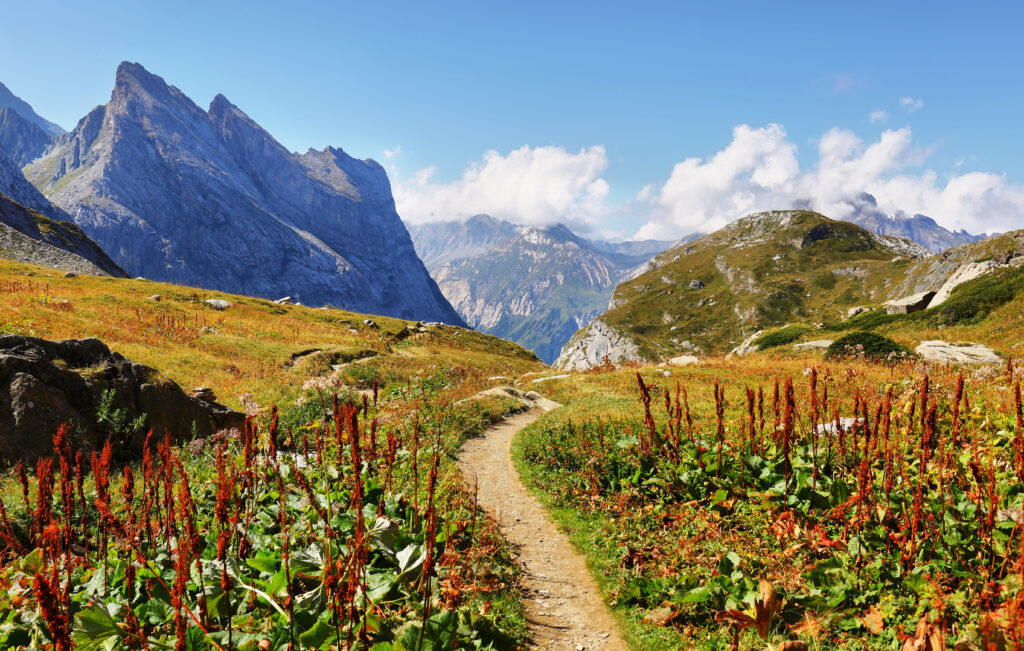
Vanoise National Park is located in the French Alps. Alpine ibex, mountain hares, beavers, wallcreepers, Eurasian badgers,
golden eagles
, and black woodpeckers call this park home.
©Marisa Estivill/Shutterstock.com
2. Pyrénées National Park
Pyrénées National Park is located on the border between France and Spain in the Pyrenees Mountains. There is so much to see and do in this beautiful national park. For example, its unique landscape includes karst valleys and caves. There are also multiple cirques in the park. One of the most well-known is the Cirque de Gavarnie. This park was first established on March 23 1967. It was a natural heritage site where animals roamed free. There are many animals in the park including about 70 species of mammals and a few threatened species. Although uncommon to witness, there is a small bear population in the park.

On the border of France and Spain, 70 species of mammals live in France’s Pyrenees National Park.
©Abelle Photography/Shutterstock.com
3. Forêts National Park
Forêts National Park is in northeastern France. The surface area of the national park is 216 square miles. It’s so large it covers about 59 communities. It was established recently on November 6, 2019. However, planning began as early as 2009. Forêts National Park is the second largest national park in the world only second to the Amazonian Park of Guiana. While visiting this gorgeous national park, you can enjoy many hiking trails and wildlife experiences. Forêts National Park is France’s 11th national park and contains over 50 million trees. If you are lucky enough while traveling to this national park, you might spot some of France’s rare species like black storks. There are only about five or six pairs in the park. Many beautiful plant species are also abundant, including the lady’s-slipper orchid.

Mercantour National Park is the perfect escape in the French Alps on a hot summer day.
©Horia Merla/Shutterstock.com
4. Calanques National Park
Calanques National Park sits on the Mediterranean coast in southern France. It also has a lot of history. For example, in 1923, the area was the Comité de défense des Calanques. Nearly a century later in 1999, a group was formed to create and plan the establishment of a national park. It wasn’t until April 18, 2012, that the Calanques National Park was established. This national park has a surface area of 201 square miles. Only about 33 square miles of the park is land, the rest is marine area. This beautiful park is breathtaking, seeing many visitors every year. Some of the most iconic sights in Calanques National Park include Calanque de Sormiou, Calanque de Morgiou, Cosquer Cave, Calanque de Port-Miou, and Calanque de Sugiton.

Calanques D’En Vau bay is located in Calanques National Park near Cassis fishing village, Provence, South France.
©Gaspar Janos/Shutterstock.com
5. Écrins National Park
Écrins National Park is a hidden gem with many things to do and see including some of the clearest glacial rivers and lakes. This national park has a surface area of 347 square miles. It’s one of the older national parks in France. Écrins National Park was established on March 27, 1963. Most of the park contains high mountains, glacial valleys and fields, subalpine woodlands and lakes, and alpine pastures. This park is so large it covers many communities in France. Écrins National Park is a popular destination and sees over 800,000 visitors annually. There are many things you can do while visiting this national park, including skiing and snowboarding. You can also view some of the best valley and waterfall views, like the Valgaudemar.
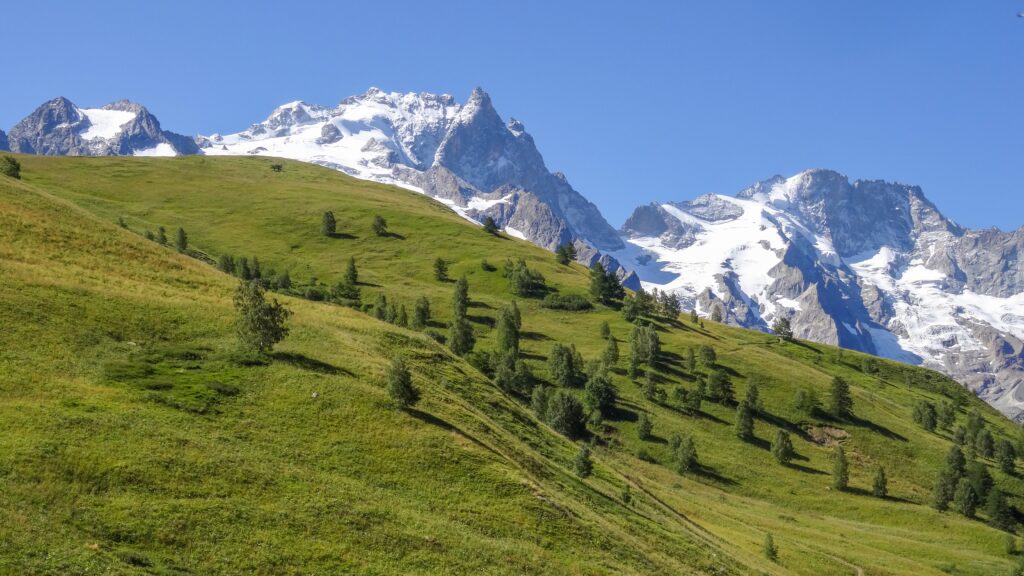
Ecrins National Park is a beautiful escape in the French Alps during summer and winter.
©RIOU Yves/Shutterstock.com
6. Réunion National Park
Although Réunion National Park is not in France, but an overseas department in the western Indian Ocean, it’s still an official National Park of France. The park was first established on March 5, 2007. The closest city to the national park is Saint-Denis. However, the first proposal for a national park in Réunion island happened in 1985. Réunion National Park covers 406.89 square miles in the interior of the island. The buffer zone covers 338.60 square miles. In other words, Réunion National Park covers over 3/4ths of the island. Interestingly, before the 1600s, Réunion island was uninhabited. On the island, there is a unique environment with a lot of wildlife and over 100 endangered native plant species. Sadly, some bird species are vulnerable or extinct because of the introduction of cats and rats.

Réunion National Park is a French National Park located on an island in the western Indian Ocean
©infografick/Shutterstock.com
7. Mercantour National Park
Mercantour National Park is located in the Alpes-de-Haute-Provence and Alpes-Maritimes. The surface area of the park is 262 square miles. Mercantour National Park was established on August 18, 1979. The central part of the park is uninhabited; however, Mercantour National Park covers 28 villages. Throughout the park, there are rural sites. For example, visitors can view architectural riches in the Gordolasque valley or petroglyphs that date from the late Neolithic and Bronze Ages around Mont Bégo. Another popular spot in Mercantour National Park is the Valley of Marvels. It’s worth the climb to admire about 37,000 petroglyphs. These petroglyphs are unique and represent human figures, weapons, and cattle. In Mercantour National Park, visitors may spot chamois, marmots, red deer, golden eagles, and Italian wolves.
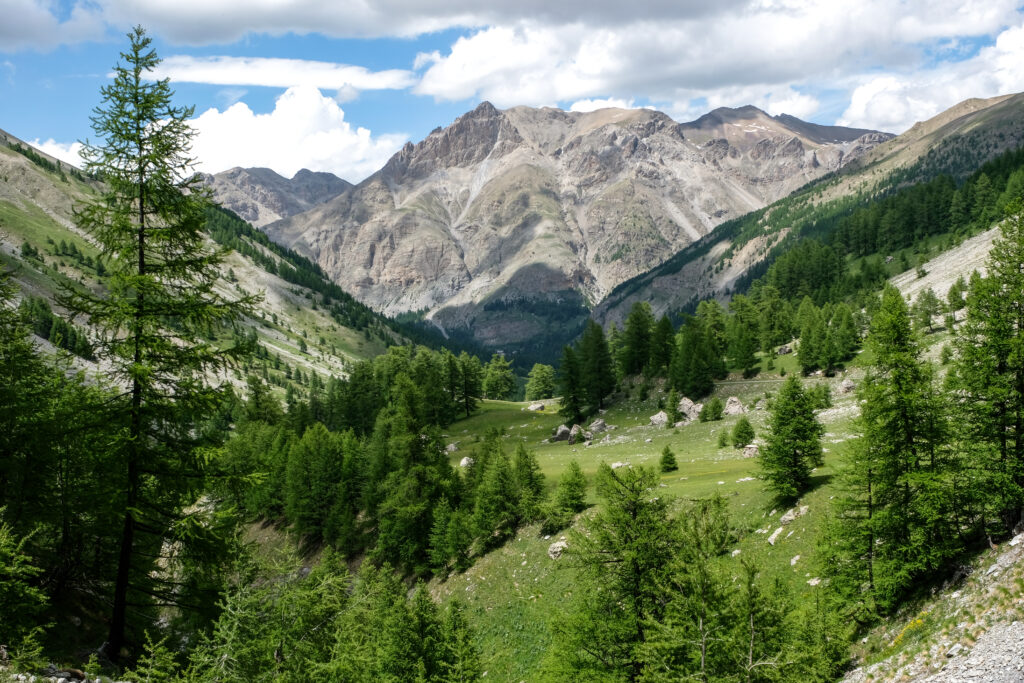
In Mercantour National Park, visitors may spot
chamois
, marmots, red deer, golden eagles, and Italian wolves.
©ErichFend/Shutterstock.com
8. Cévennes National Park
Cévennes National Park is in southern France, specifically Cévennes. The national park is very mountainous and was established on September 2, 1970. The surface area is 362 square miles. Cévennes National Park has a strong cultural identity and a lot of history you can see while visiting. Within the national park are multiple towns and villages. You can see the history of the region in places like the old temple of Le Rouve. Inside this temple is a permanent exhibition remembering the Camisards. A popular spot many visitors go to while in Cévennes National Park is the Aven Armand. This limestone cave is stunning and has a vaulted chamber close to 300 feet long and 180 feet wide. A manmade tunnel has made it easier for visitors to view.
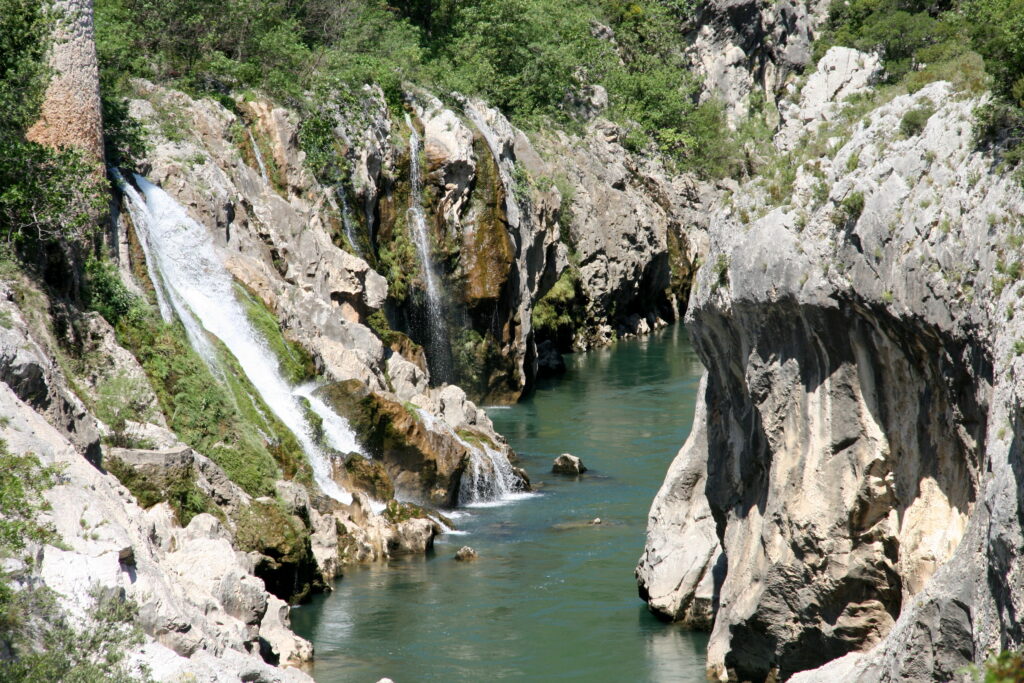
Mountainous Cévennes National Park is located in southern France.
©Mhai Little Arts/Shutterstock.com
9. Guadeloupe National Park
Although not in Europe, Guadeloupe National Park is a French national park in an overseas department of France, Guadeloupe. It’s a Caribbean island in the Leeward Islands. While the park was not established until 1989, it was under the management of the National Forests Office starting in 1970. However, by 1977, proposals to establish the area as a national park emerged. This national park has a core surface area of 43,000 acres and a buffer zone of 40,000 acres. The marine reserve’s total surface area is 14.3 square miles. There are 11 communes in the national park. Within the thousands of acres, are three ecosystem types: tropical rainforest, coastal forest, and mangrove. Sadly, because of intensive hunting, animal populations are low. Some have even gone extinct. However, visitors can sometimes spot sea turtles, bats, thrushes, partridges, pigeons, pelicans, and raccoons.
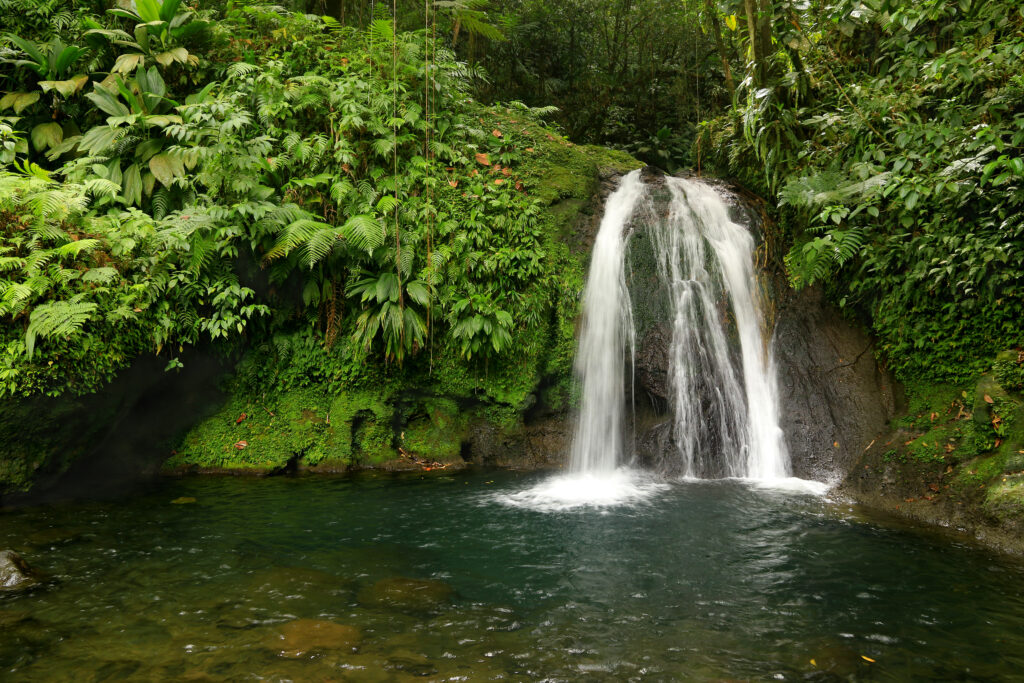
Guadeloupe National Park, located in the French Caribbean, has three ecosystem types: tropical rainforest, coastal forest, and mangrove. Cascades aux Ecrevisses is located in the rainforest.
©Inga Locmele/Shutterstock.com
10. Port-Cros National Park
Port-Cros National Park is a French national park on the Mediterranean island of Port-Cros. The park was established on December 14, 1963. It’s governed and overseen by Parcs Nationaux de France. Although the Port-Cros National Park was not the first national park in France, it’s the first national park in Europe with terrestrial and maritime protection zones. The national park’s surface area is 18 square miles. The small islands of Bagaud, Gabinière, and Rascas are also protected. This marine national park is a paradise with many things for visitors to do. Some of the most popular activities include swimming on the beach, snorkeling, and hiking. The water is clear and calm.
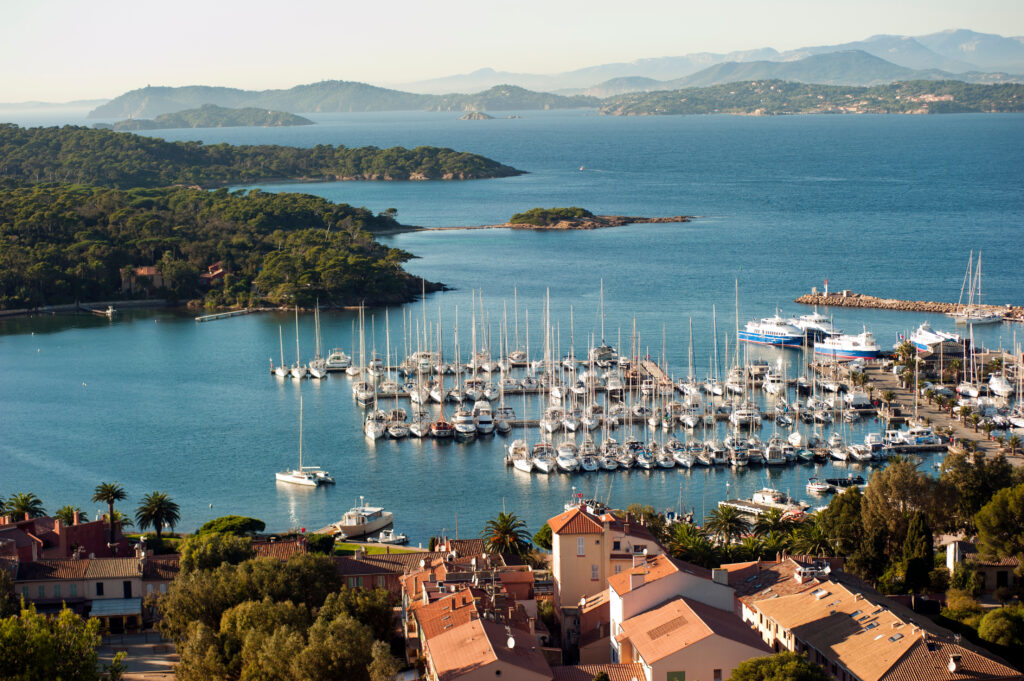
Port-Cros National Park is a French national park on the Mediterranean island of Port-Cros.
©zaferkizilkaya/Shutterstock.com
Guiana Amazonian Park
Last but not least is France’s largest national park, Guiana Amazonian Park. It’s located in French Guiana and shares a border with Brazil. Guiana Amazonian Park isn’t just the largest national park in France, but the entire European Union. About 13,090 square miles of this national park are fully protected. The aim of Guiana Amazonian Park is to protect part of the Amazonian forest in French Guiana. Although the park wasn’t established until 2007, the plan first began on June 4, 1992. You can only access this park by air or canoe.
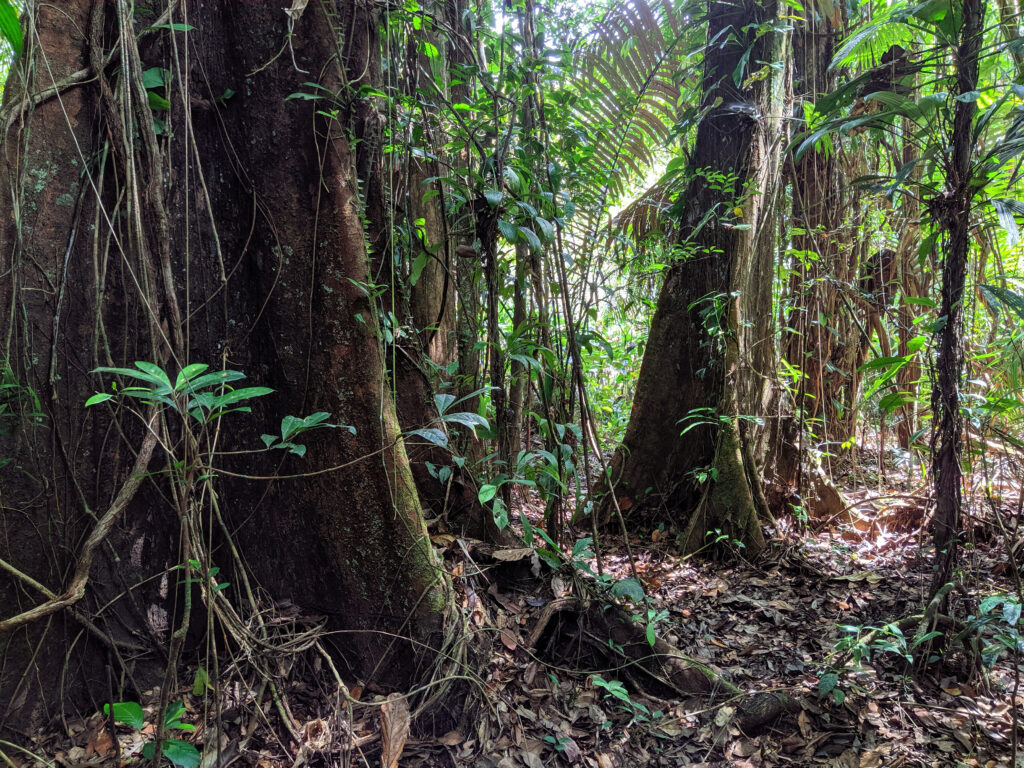
Guiana Amazonian Park isn’t just the largest national park in France, but the entire European Union.
©Petr Muckstein/Shutterstock.com
The photo featured at the top of this post is © proslgn/Shutterstock.com
Thank you for reading! Have some feedback for us? Contact the AZ Animals editorial team.






